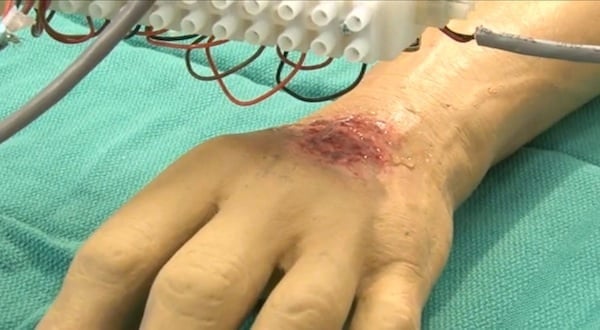Why Print Skin?

Though many don’t realize it, the skin is the largest organ, and healthy skin is essential to a healthy life. Since it covers our body and is our first line of defense, it’s prone to many different injuries. Burns, deep wounds, and non-healing cuts can all pose a large threat and need to be treated immediately.
The best way to heal a serious skin injury is through a transplant, but conventionally, this has to come from a donor. For more severe wounds, this skin would need to span across all three layers of skin: The epidermis, dermis, and hypodermis, making it very difficult to find a proper graft.
On top of this, healthy donor skin in any form is a scarcity, and patients who urgently need a transplant may be out of luck.
Thanks to 3D bioprinting, this soon won’t be the case. New technologies have enabled doctors to manufacture grafts for their patients, and they hope that they can soon eliminate the problem entirely.
Bioprinters can create skin transplants perfectly-suited to a patient’s injury, matching the depth and shape needed. They can also print all three types of skin cells, meaning that even severe burns and cuts can be treated this way.
These projects are extremely promising, and they likely will end up in hospitals all around the world in the near future.
Wake Forest Institute for Regenerative Medicine
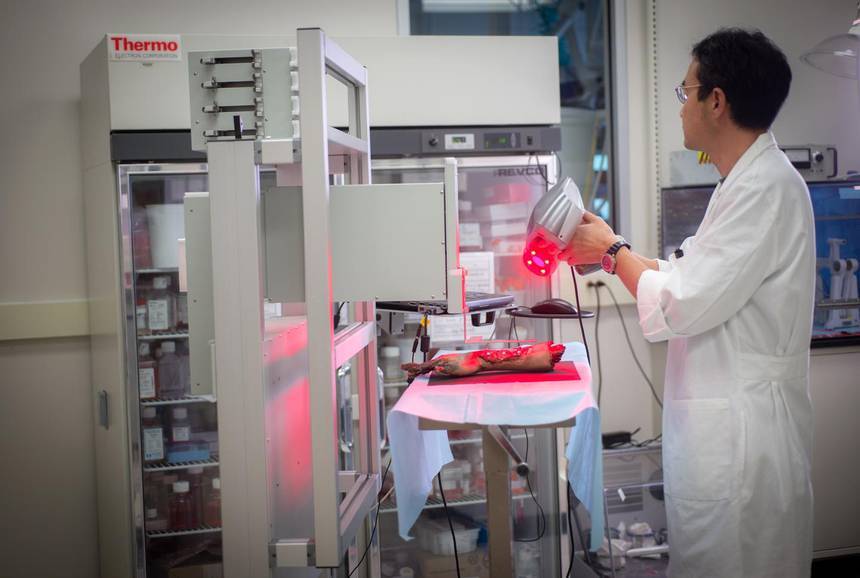
The Wake Forest Institute for Regenerative Medicine has proven itself to be one of the most prominent names in 3D bioprinting, having successfully printed many organs, from bladders to cardiovascular tissue. Now they’re back at it, recently printing human skin directly onto model patients.
Their printer is capable of printing all three kinds of skin cells, meaning that it can help heal very deep wounds. By 3D scanning the area beforehand, they believe that they can print directly onto a patient’s wound, making a perfect fit. In addition to this, their printer would use the patients’ own skin cells, meaning that there would be very little risk that the patient’s body rejects the graft.
The researchers believe that this technology will be very helpful in treating patients with severe burns and wounds, as their method of printing directly onto the injury greatly speeds up the process.
University of Toronto
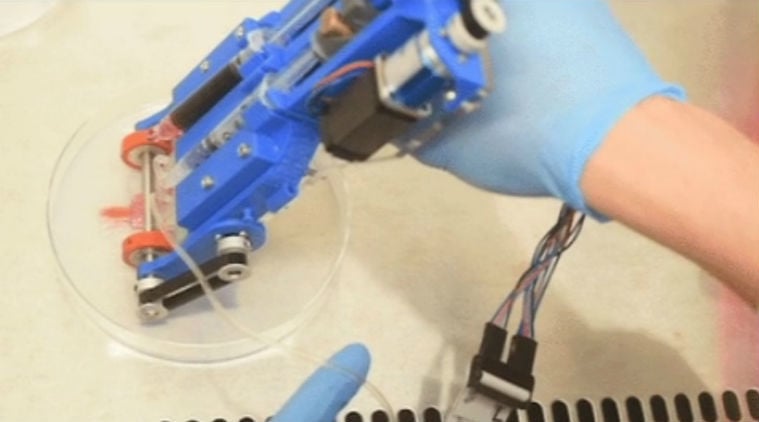
University of Toronto researchers have taken the convenience of skin bioprinting to another level: Their printer is completely handheld.
According to the team, “The handheld device is the size of a small shoebox and weighs less than a kilogram. It also requires minimal operator training and eliminates the washing and incubation stages required by many conventional bioprinters.”
They have also created a perfect mixture of cells and proteins to use as bioink. Included is the protein hyaluronate, which is commonly found in human connective tissues and promotes healing and strengthening of cells.
They hope to soon test their device on actual patients, predicting that their technology will be able to repair deep wounds in under two minutes.
The Singapore Institute of Manufacturing Technology
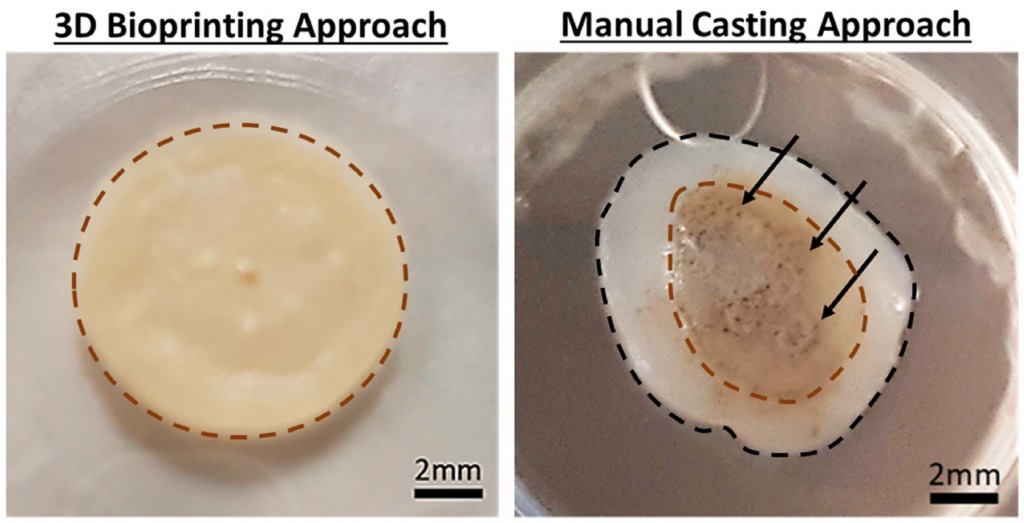
One of the biggest problem with skin grafts is coloration. Whether it’s donated or manufactured, it’s very difficult to get the skin color right. Researchers at the Singapore Institute of Manufacturing Technology believe that 3D bioprinting provides a unique solution.
By controlling melanin production in the bioink, researchers have been able to create very realistic coloration on printed samples. Because of the even and precise distribution of a 3D printer, very uniform coloration, far better than that of other methods, can be achieved.
In making printed skin more realistic, these researchers have made bioprinted skin far more appealing of a solution, and having accurately colored skin will make the healing process much easier for the patient.
Early Applications
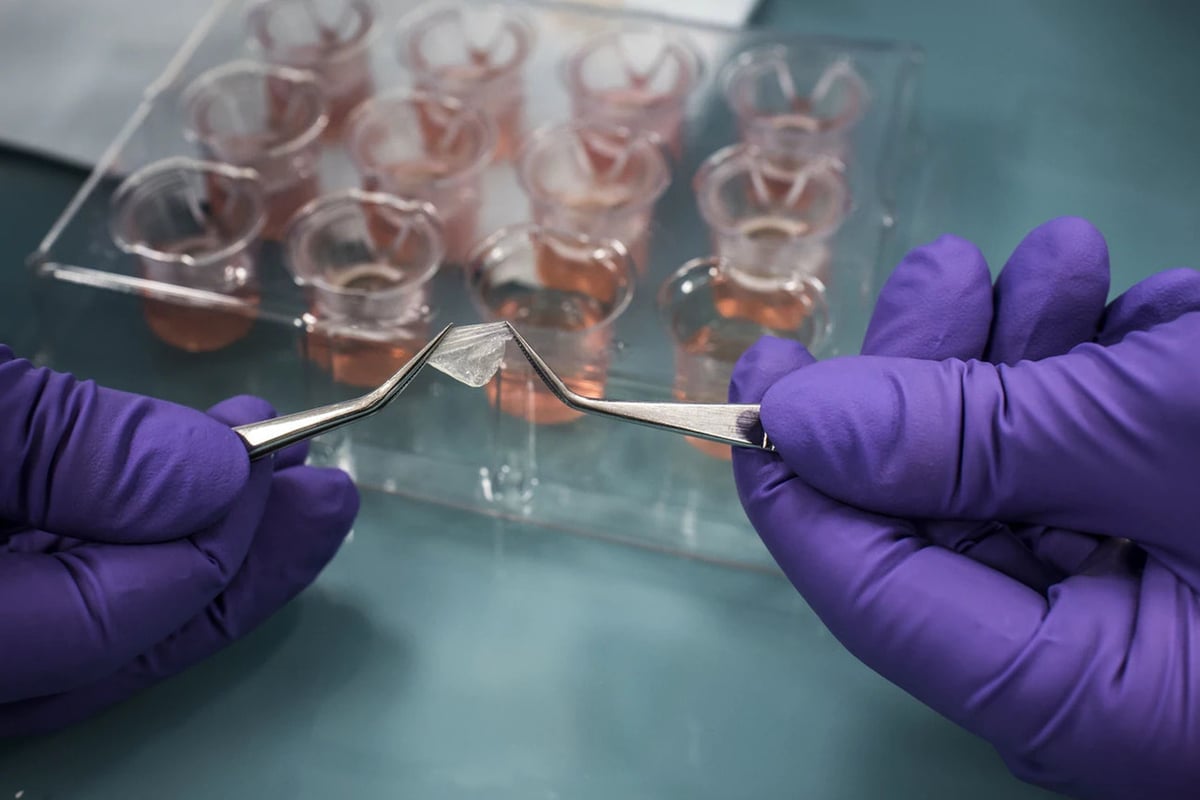
Despite the fact that this technology is still in its infancy, it’s already being applied in the real world.
One bioprinting company, Organovo, has teamed up with the makeup company L’Oréal to pursue a novel application. Specifically, they’re planning to use 3D bioprinted skin to test makeup products instead of using animal testers. This will provide more accurate results for the makeup company and eliminate the widespread concern of cruelty that comes with animal testing.
Scientists at NASA are now also gaining interest in this technology. They believe that it could be very useful for astronauts going to Mars since it will allow them to heal unforeseen injuries with limited resources. Researchers at the University Hospital of Dresden Technical University are exploring the prospect of printing in space, and they’ve already created a very viscous bioink that can be printed in zero gravity.
(Lead image source: Pinterest)
License: The text of "3D Printing Skin: The Most Promising Projects" by All3DP is licensed under a Creative Commons Attribution 4.0 International License.
